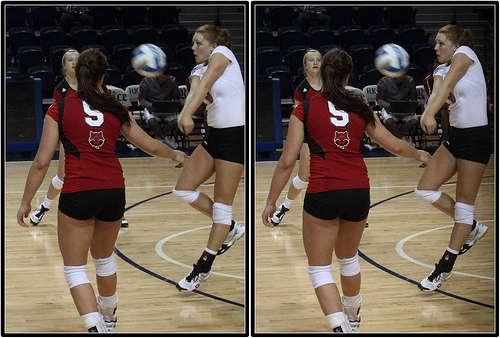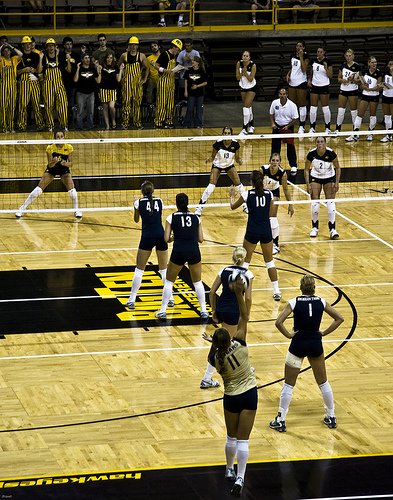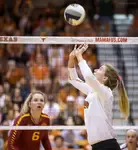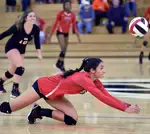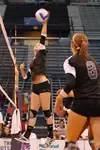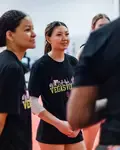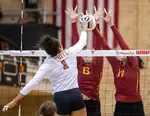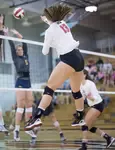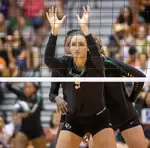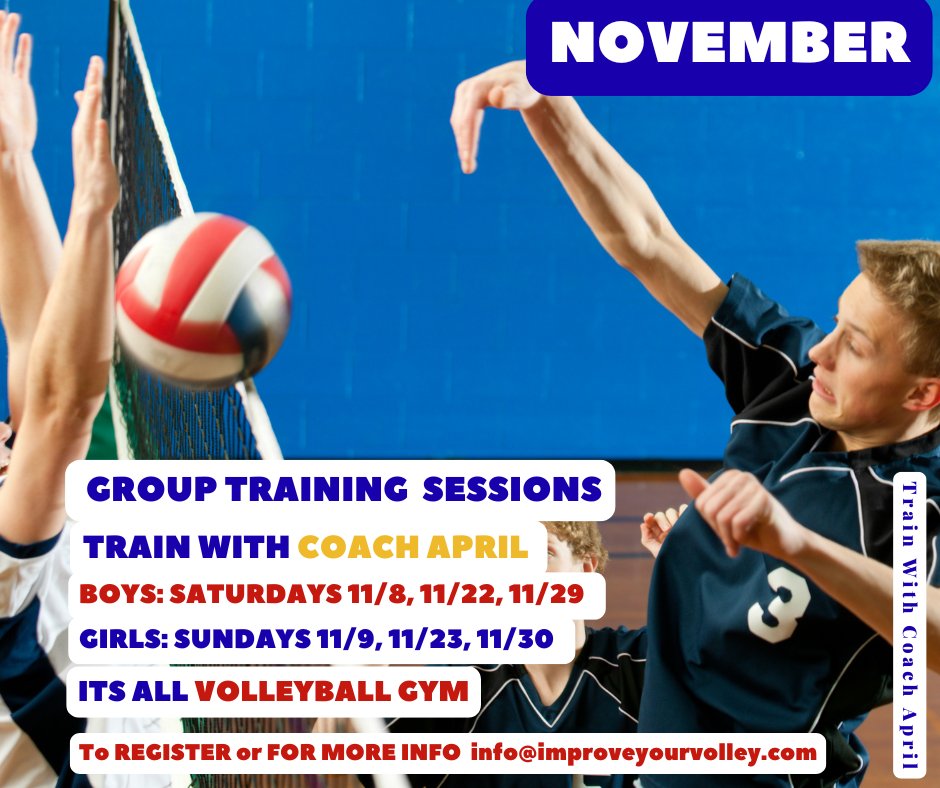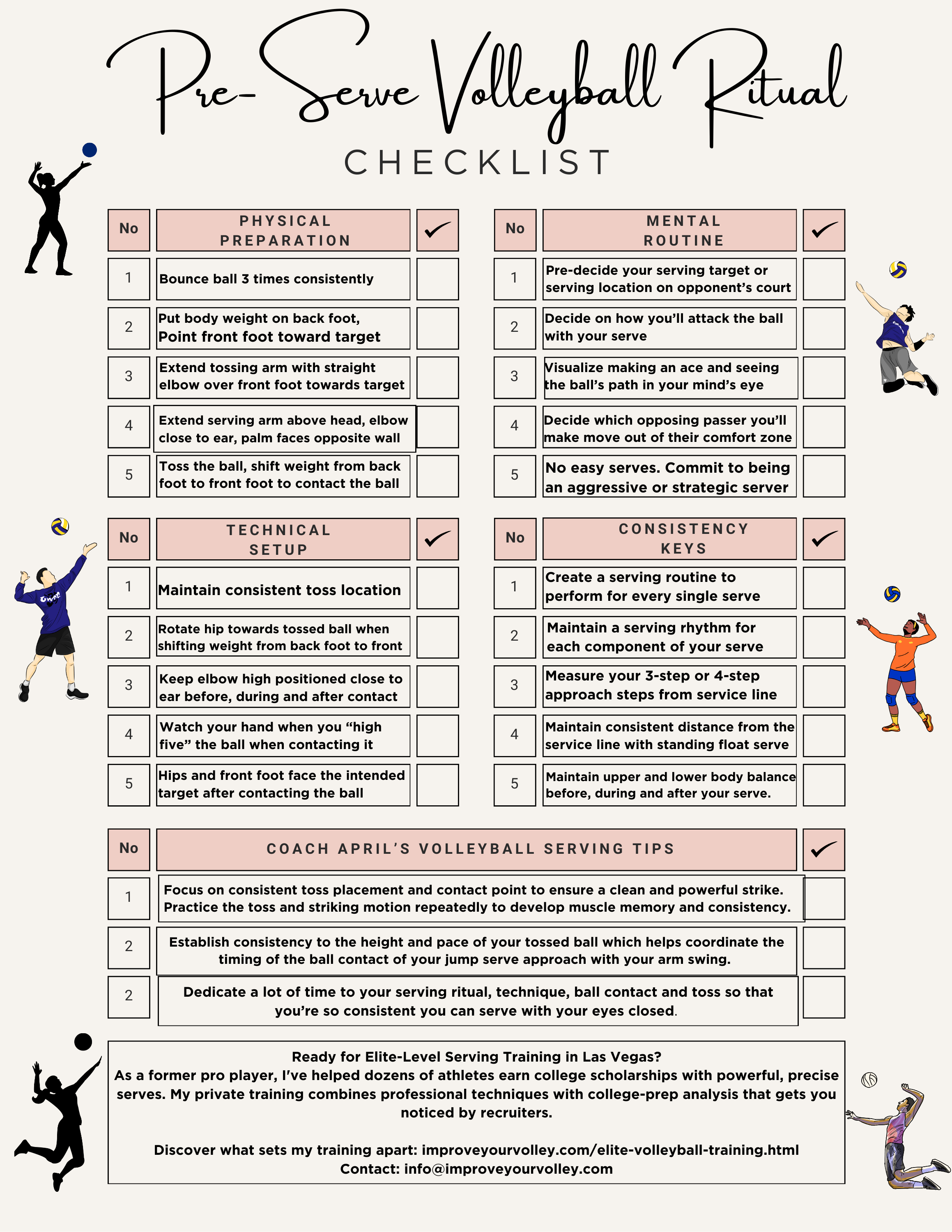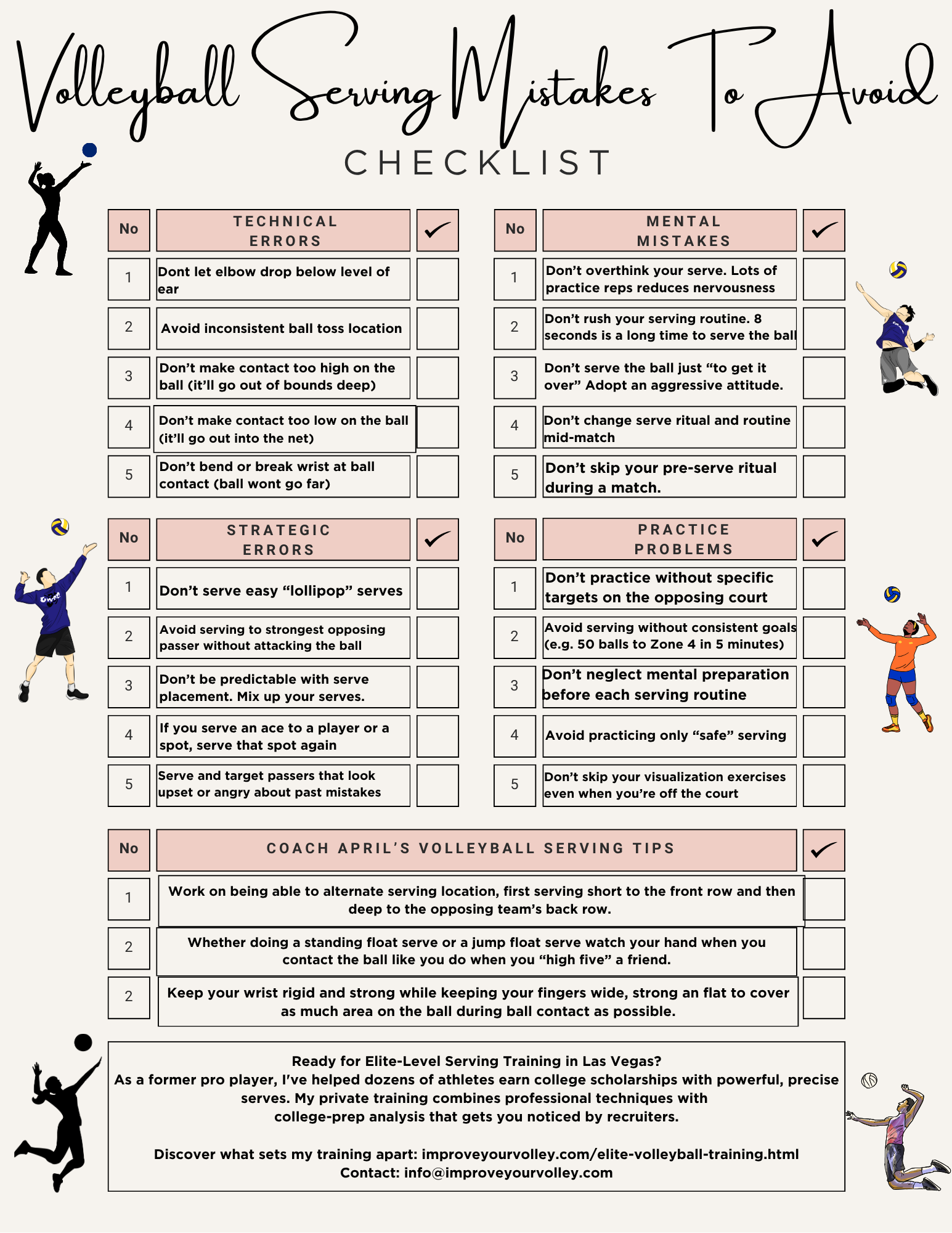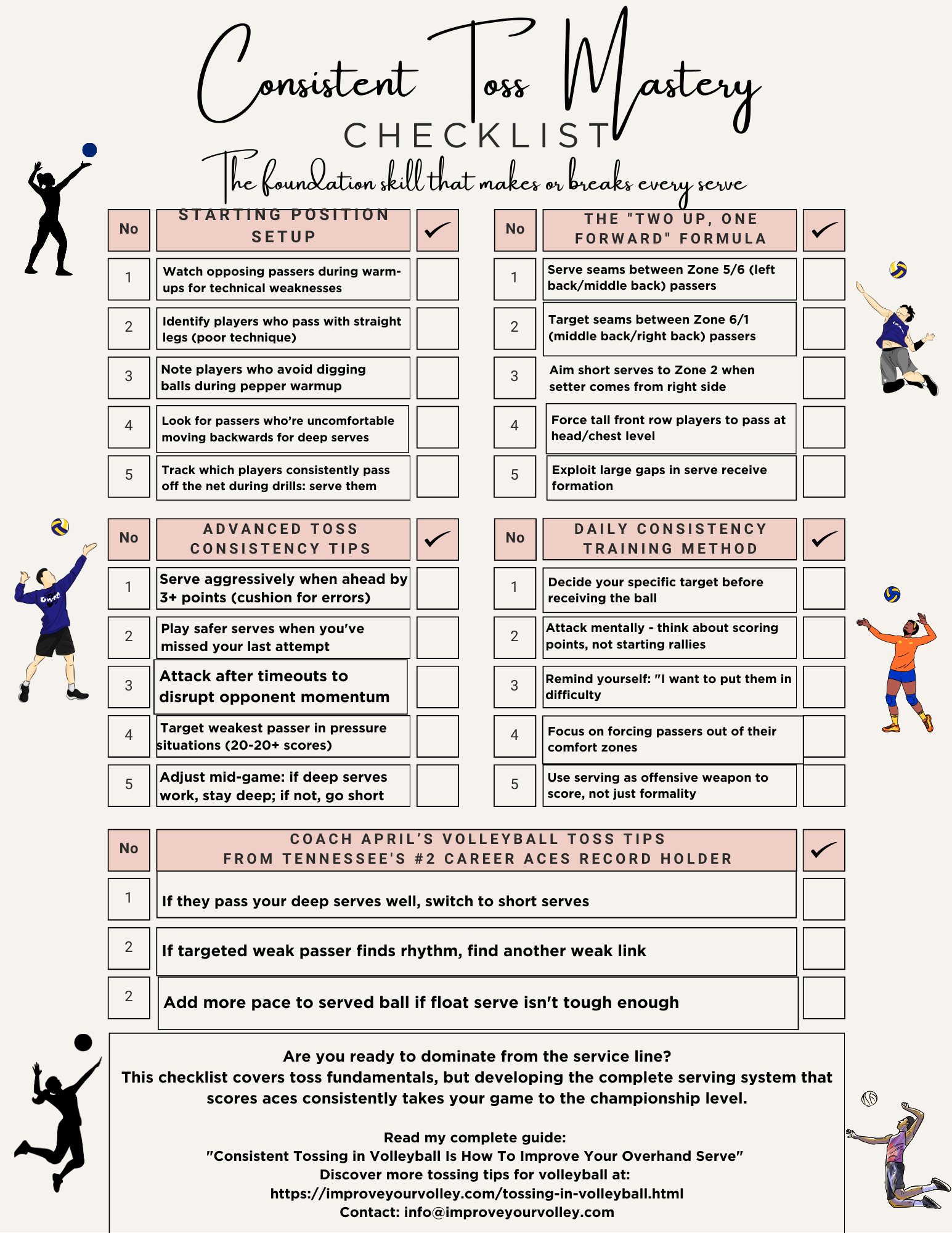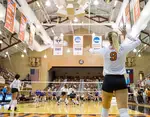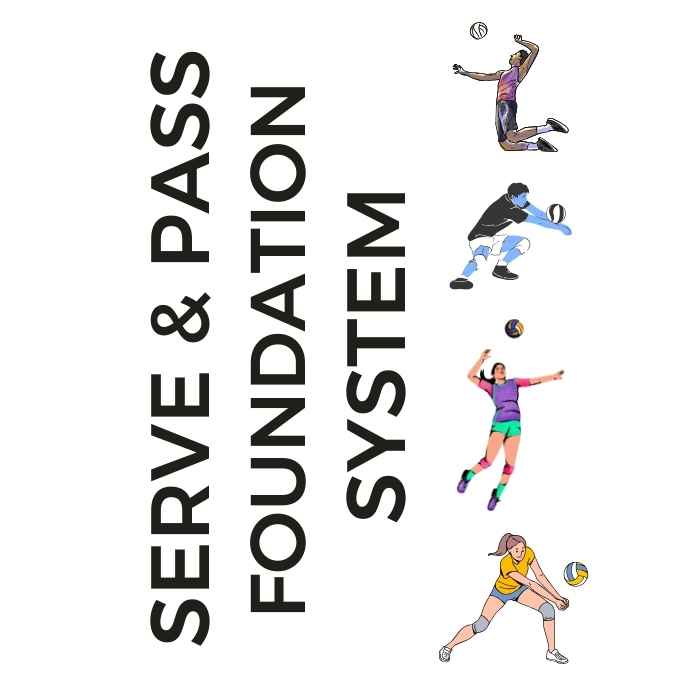
Serve + Pass Foundation System: The Complete Skills Arsenal The two-skill mastery system that transforms inconsistent players into the athletes coaches build their lineups around. Stop Struggling With The Two Most Important Skills In Volleyball!
- Improve Your Volleyball with Coach April
- Volleyball Positions: What Are The Six Volleyball Roles
- Volleyball Positions on the Court
Volleyball Positions on the Court: Backrow Rotations in Volleyball
Learn the descriptions and the different backrow volleyball positions on the court and how the rotation in volleyball works in the backrow player positions.
Volleyball Positions on the Court
If you're In the back row here's where you go on offense and/or defense if you're an
- outside hitter
- opposite hitter
- middle blocker
- setter
Improve your hand positioning with this volleyball setting trainer I use in my private sessions
Volleyball Positions on the Court: Back Row Rotations in Offense and Defense
Volleyball Positions on the Court - for Zone 1
If you're In volleyball rotational Position 1/Zone 1 here's where you go on defense and/or offense if you're an
- outside hitter
- opposite hitter
- 6 position middle blocker
- libero
- setter
If you are a left side hitter/blocker
- if serving - after completing your serve you run into the court to get into base defensive position in Rotational position 5, (left back, LB, Zone 5) If you win the rally, your team earns a point and you go back to serve again.
- in serve receive, depending on your coach and the offense you run, most likely when your team is served, as the libero you'd pass from RB (Position 1, P1, Zone 1) and when the ball goes over the net you'd switch to Position 5 to continue the rally digging, playing defense and possibly hitting from backrow* until the rally is completed.
- *many teams, depending on their offensive strategies will place left side hitter in the MB position (P6) so they can dig and hit backrow
If you are a libero/middle hitter/blocker
- if serving - after completing your serve you run into the court to get into base defensive position in Rotational Position 6, (middle back, MB, Zone 6) If you win the rally, your team earns a point and you go back to serve again.
- in serve receive, depending on your coach and the offense you run, most likely as the libero, when your team is served, you'd pass from RB (Position 1, P1, Zone 1) taking as much court responsibility as possible and when the ball goes over the net you'd switch to Position 6 to continue the rally digging, playing defense from backrow* until the rally is completed.
- *many teams, depending on their offensive strategies will place liberos in the LB position (P5) so they can dig the cross court attacks and set when necessary from the backrow.
If you are a setter or right side hitter/blocker
- if serving - after completing your serve you run into the court to get into base defensive position in Rotational position 1, (right back, RB, Zone 1) If you win the rally, your team earns a point and you go back to serve again.
- In serve receive, depending on your coach and the offense you run, most likely when your team is served, as the setter you'd stand behind the right front player who is passing. Once the ball is served you sprint to go to the net to Position 2/3 to be the setter target your passers pass the ball to. Once you run the offense and set one of your hitters and the ball goes over the net you return backrow to your base position to play defense.
- in serve receive, depending on your coach and the offense you run, most likely as the right side hitter, when your team is served, you'd pass from RB (Position 1, P1, Zone 1) taking as much court responsibility as possible alongside the libero in P6 and the left side hitter in P5/P4 and when the ball goes over the net you'd stay in Position 1 to continue the rally, digging, playing defense from backrow* until the rally is completed.
Volleyball Positions on the Court - for Zone 6
If you're In volleyball rotational Position 6/Zone 6 here's where you go on defense and/or offense if you're an
- outside hitter
- opposite hitter
- 6 position middle blocker
- libero
- setter
If You're In Volleyball Rotation Position 6/Zone 6 where do you go on offense or defense?
If you are a left side hitter/blocker
- on defense - you start in Rotational Position 6 and after your team serves, you switch going to your base defensive position in Rotational position 5, (left back, LB, Zone 5) to continue the rally digging, playing defense and possibly hitting from backrow* until the rally is completed.
- in serve receive, depending on your coach and the offense you run, most likely when your team is served, you'd pass from MB (Position 6, P6, Zone 6) and when the ball goes over the net you'd switch to Position 5 to continue the rally digging, playing defense and possibly hitting from backrow* until the rally is completed.
- *many teams, depending on their offensive strategies will place left side hitter in the MB position (P6) so they can dig and hit backrow
Improve your blocking hands positioning with the volleyball blocker pads I use in my private sessions
If you are a libero/middle hitter/blocker
- on defense - you start in your base defensive position in Rotational Position 6 and stay there after your team serves, to continue the rally, digging, playing defense until the rally is completed.
- in serve receive, depending on your coach and the offense you run, most likely as the libero, when your team is served, you'd pass from MB (Position 6, P6, Zone 6) taking as much court responsibility as possible and when the ball goes over the net you'd stay in Position 6 to continue the rally digging, playing defense from backrow* until the rally is completed.
- *many teams, depending on their offensive strategies will place liberos in the LB position (P5) so they can dig the cross court attacks and set when necessary from the backrow.
>br>
If you are a setter or right side hitter/blocker
- on defense - you start in Rotational Position 6 and after your team serves, you switch going to your base defensive position in Rotational position 1, (right back, RB, Zone 1) to continue the rally digging, playing defense and possibly until the rally is completed.
- In serve receive, depending on your coach and the offense you run, most likely when your team is served, as the setter you'd stand behind the middle front player who may or may not be passing. Once the ball is served you sprint to go to the net to Position 2/3 to be the setter target your passers pass the ball to. Once you run the offense and set one of your hitters and the ball goes over the net you return backrow to your base position (P1) to play defense.
- in serve receive, depending on your coach and the offense you run, most likely as the right side hitter, when your team is served, you'd pass from MB (Position 6, P6, Zone 6) and when the ball goes over the net you'd switch to your base defensive position in Position 1 to continue the rally, digging, playing defense from backrow* on the right side of the court until the rally is completed.
Volleyball Positions on the Court - for Zone 5
If you're In volleyball rotational Position 5/Zone 5 here's where you go on defense and/or offense if you're an
- outside hitter
- opposite hitter
- 6 position middle blocker
- libero
- setter
If you are a left side hitter/blocker
- on defense - you start in Rotational Position 5 and after your team serves, you stay in your base defensive position in Rotational position 5, (left back, LB, Zone 5) to continue the rally digging, playing defense and possibly hitting from backrow* until the rally is completed.
- in serve receive, depending on your coach and the offense you run, most likely when your team is served, you'd pass from LB (Position 5, P5, Zone 5) and when the ball goes over the net you'd stay in Position 5 to continue the rally digging, playing defense and possibly hitting from backrow* until the rally is completed.
- *many teams, depending on their offensive strategies will place left side hitter in the MB position (P6) so they can dig and hit backrow
If you are a libero/middle hitter/blocker
- on defense - you start in Rotational Position 5 and after your team serves, you switch going to your base defensive position in Rotational position 6, (middle back, MB, Zone 6) to continue the rally digging, playing defense and possibly hitting from backrow* until the rally is completed.
- in serve receive, depending on your coach and the offense you run, most likely as the libero, when your team is served, you'd pass from LB (Position 5, P5, Zone 5) taking as much court responsibility as possible and when the ball goes over the net you'd switch back to your base defensive position in Rotational Position 6 to continue the rally digging, playing defense from backrow* until the rally is completed.
- *many teams, depending on their offensive strategies will place liberos in the LB position (P5) so they can dig the cross court attacks and set when necessary from the backrow.
Improve your spiking and hitting technique with the volleyball hitting trainer equipment I use in my private sessions
If you are a setter or right side hitter/blocker
- on defense - you start in Rotational Position 5 and after your team serves, you switch going to your base defensive position in Rotational position 1, (right back, RB, Zone 1) to continue the rally digging, playing defense and possibly until the rally is completed.
- In serve receive, depending on your coach and the offense you run, most likely when your team is served, as the setter you'd stand behind and to the left of the left front player who may or may not be passing. Once the ball is served you sprint to go to the net to Position 2/3 to be the setter target your passers pass the ball to. Once you run the offense and set one of your hitters and the ball goes over the net you return backrow to your base position (P1) to play defense.
- in serve receive, depending on your coach and the offense you run, most likely as the right side hitter, when your team is served, you'd pass from LB (Position 5, P5, Zone 5) and when the ball goes over the net you'd switch to your base defensive position in Position 1 to continue the rally, digging, playing defense from backrow* on the right side of the court until the rally is completed.
Volleyball Positions:
Where Do You Go From Here?
Good times! Here's where you need to go now? Here are three options:
- Learn more about volleyball positions and rotations and in the Related Links below.
- Follow the suggested reading on our Sitemap page Learning How To Play (Sitemap)
- Or visit the pages in the Positions section in the drop down menu at the top of the page.
If your athlete struggles with consistent serve receive, gets subbed out, or is overlooked for playing time—this is the fix you’ve been looking for.

Struggling with passing consistency?
I help talented passers tired of getting pulled from games because of inconsistent serve receive skills BUILD passing confidence without expensive private lessons using the same 3-step system that's helped dozens of my athletes get recruited.
Download my eBook for $17.99 and start building the passing confidence that keeps you on the court—and gets you seen by college coaches.
From Lady Vol to Legend: Coach April Produces Powerful Passionate Players...is that you?
What Are You Looking For?
Click to Download Your Pre Serving Ritual Mastery Checklist pdf:
🎯Volleyball Pre Serving Ritual Guide -
Players! Learn How To Transform Your Serve from Weak to Weapon
Click to Download Your Parent's Volleyball Serving Checklist pdf
🎯Parent's Volleyball Serving Checklist Guide
Parents! Help Your Player Develop Championship Serves (Even If You've Never Played)

Hi there!
Thanks for stopping by. Hope you learned something today that will help you reach your volleyball goals.
Be sure to subscribe to my email newsletter so you can learn more each week!
Stay strong! Stay motivated!
-Coach April

SUSCRIBE to my email newsletter below!
 Click to learn more about the weekly volleyball classes and clinics or email info@imrpoveyourvolley.com for information
Click to learn more about the weekly volleyball classes and clinics or email info@imrpoveyourvolley.com for informationCongratulations to my seven Boys-18s Vegas Volley club players who played in two state championship finals yesterday, the 3A and 5A State champinship finals at Sunrise Mountain High School.
TOURNAMENT CHAMPIONS!
A-1 Vegas Volley VBC
In It To Win It Tournament
May 2 - 4, 2025 Tournament
Gold Medalists
18s Premier Division
Vegas Volleyball's Unsung Heroes: Celebrating Moms with Peace Love Volleyball Shirts
Ready to energize your volleyball mom journey?
Subscribe to my 'Producing Powerful Passionate Peaceful Players' email list above on ImproveYourVolley.com.
You'll receive energy-boosting tips, exclusive insights from me, Coach April Chapple on maintaining momentum in volleyball.
Let's power up the Vegas volleyball scene together!
Recent Articles
-
5 Essential Serving Tips from Tennessee's #2 Career Aces Record Holder
Dec 09, 25 11:39 PM
I've identified the 5 essential serving tips that separate confident servers from struggling ones and you'll serve with the confidence that creates aces -
The Volleyball Toss How Consistent Is Your Ball Toss Before You Serve?
Dec 07, 25 12:29 AM
The volleyball toss for the overhand serve needs to consistently be two feet up in the air and one foot in front of front foot which puts the ball in front of your serving arm. -
Shop Small: Real Volleyball Training With + Results From A Real Coach
Dec 03, 25 10:30 AM
Support a woman-owned business. Get training from a former elite pro with 13+ years coaching experience. Ditch the big box store--invest in proven results.




